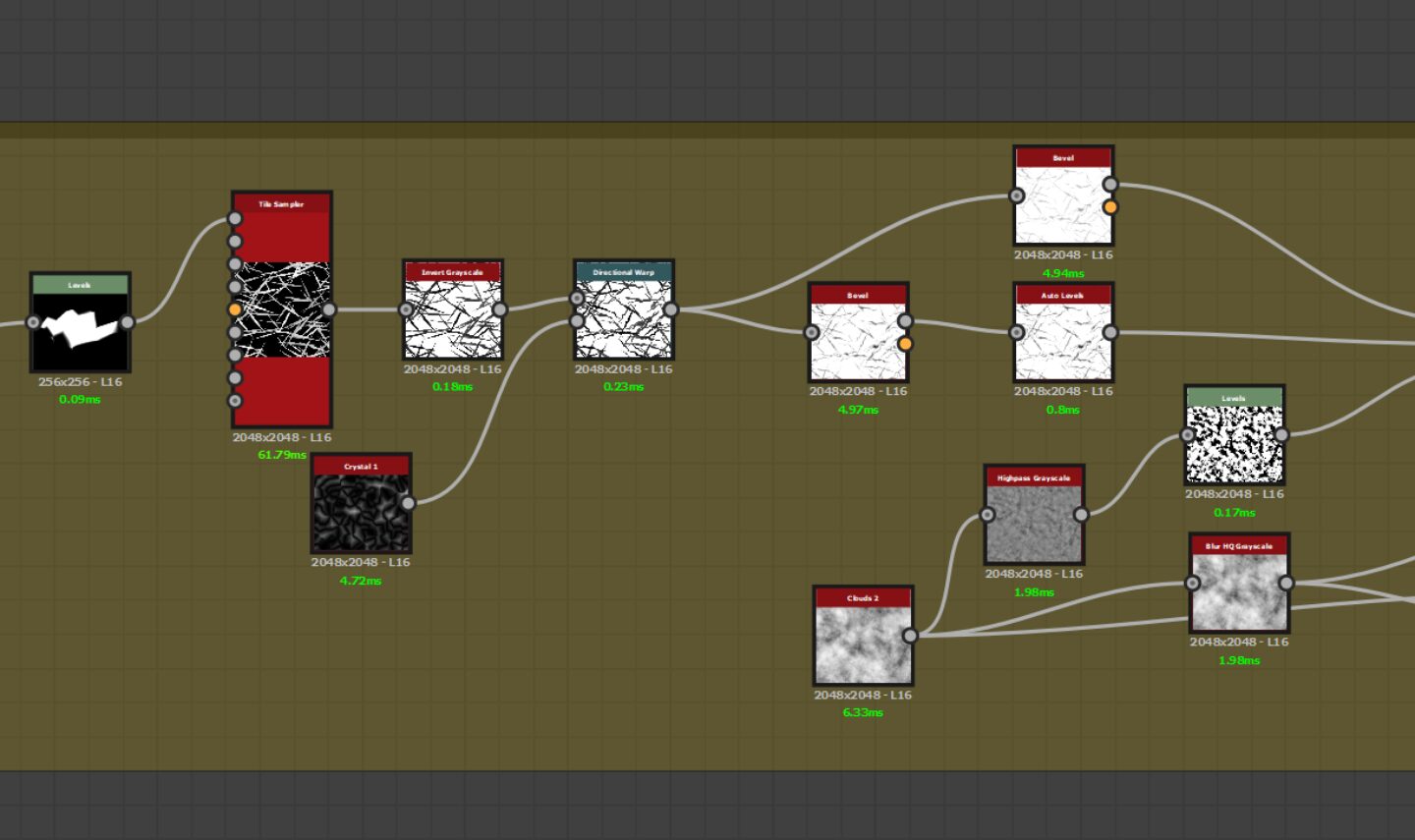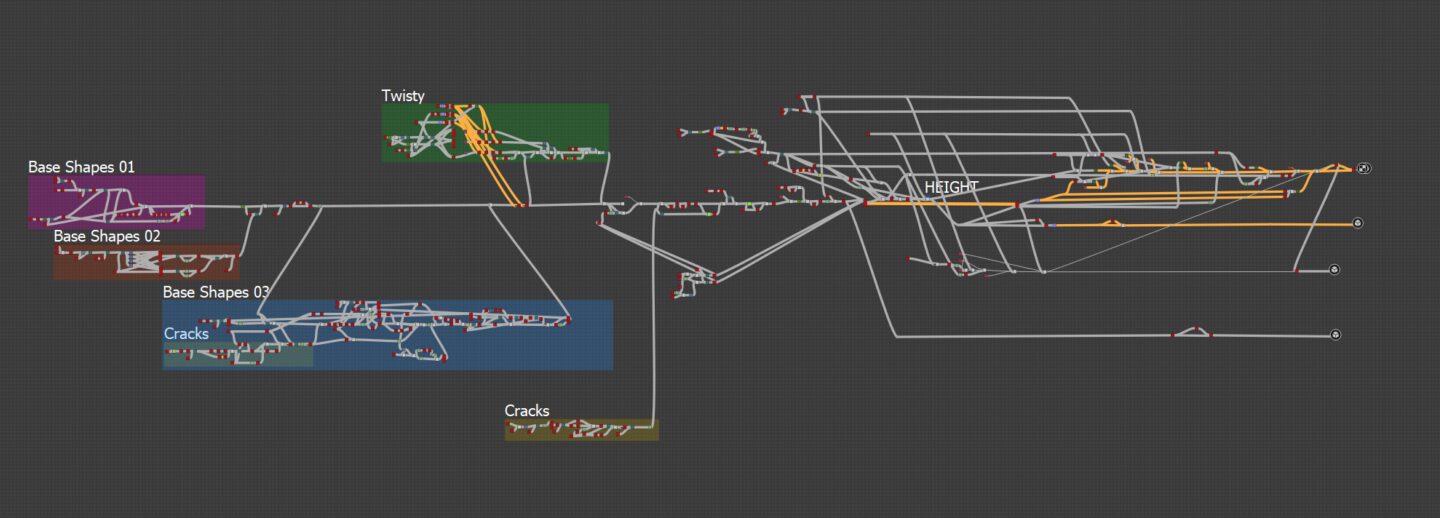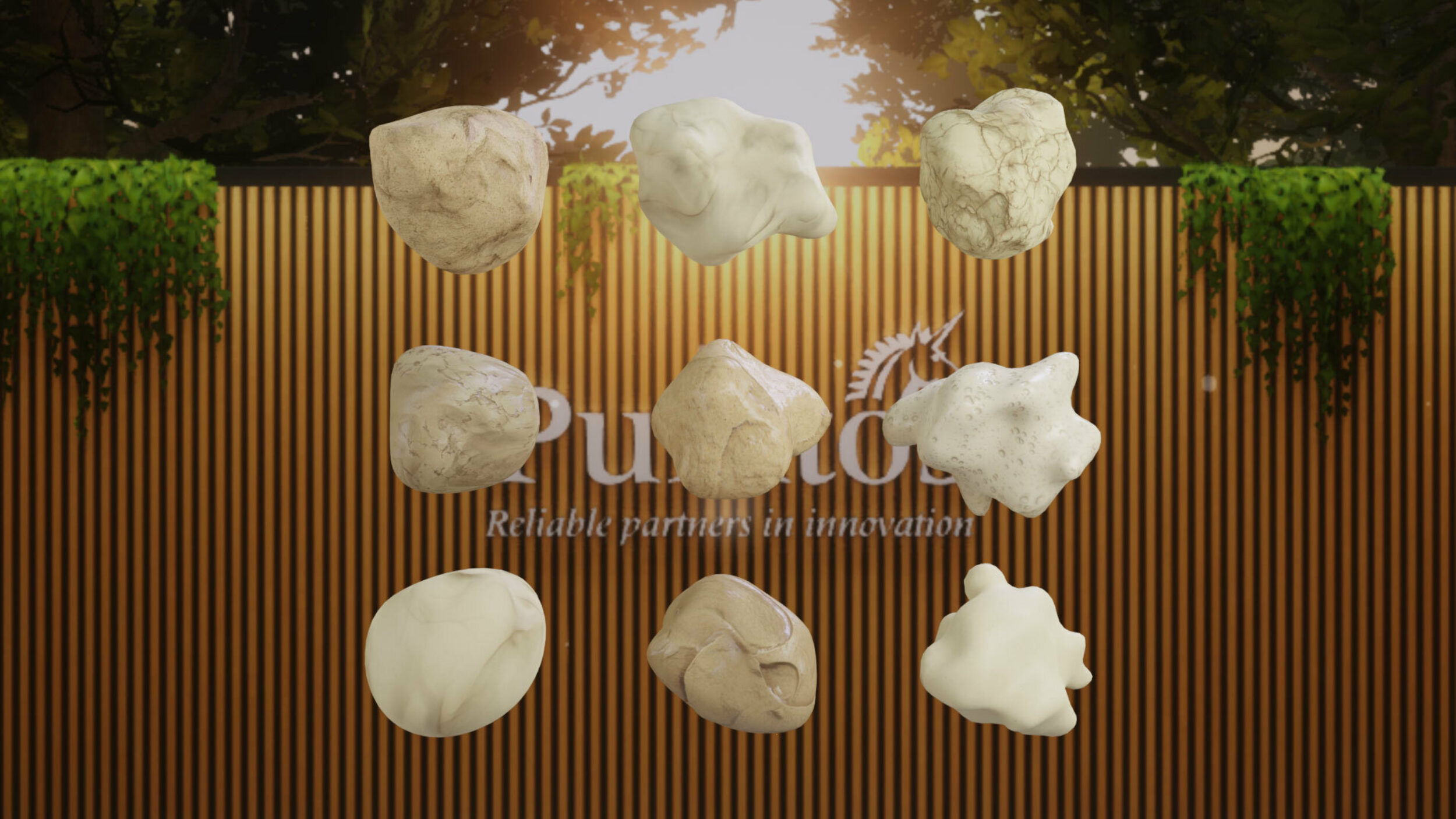Sourdough, from real life to 3D
- 3D
Sourdough can look a million different ways. It can be smooth or rough, look blobby or distinct, have big seeds or no seeds, feel wet or dry — all in various degrees. So how do we go about making sure Puratos can input all these sourdoughs in its virtual collection?
The best thing since sliced sourdough bread
Sure, we can rely on photographs, but the virtual library is a dynamic 3D experience. It would be a step down to only show pictures of the dough. It is the sourdough library, after all. So we went the whole nine yards and provided the Puratos Sourdough Library with a virtual sourdough generator.
Honestly, it’s the best thing since sliced sourdough bread.
The sourdough generator
Using the sourdough generator, librarian Karl de Smedt is able to add any kind of sourdough into his library. The generator gives him full control. The librarian can choose from nine different sourdough 3D models and change over 30 parameters affecting shape, twistiness, smoothness, cracks, seeds, color, and blobbiness, to name just a few. From the client-side, the sourdough generator is easy-to-use. He only has to slide every option left or right and behold how it influences the dough.
Procedural texturing
The sourdough generator uses a relatively new technique called procedural texturing. It’s a dynamic way of creating textures for 3D models. While classic texturing definitely has its merits, it comes with its limitations. Let’s illustrate this with a more simple example: brick textures.
Imagine you need a brick texture for one of your projects. You search the internet and find an almost perfect sample. You only want to darken some random bricks in the texture, change the scale of the bricks, and you’re good to go. So you import the texture into Photoshop, tweak the bricks as best you can, and export it back out. With every new alteration you want to try, you have to repeat the entire process. It’s a time-consuming endeavour.
Thanks to procedural texturing, there’s an easier way to do this. Because of the textures’ dynamic capabilities, your brick texture can become any kind of brick you want it to be with just the click of the button.

Substance Designer
Procedural textures get made with Substance Designer. It’s the industry standard. With this powerful software in hand, you can make any kind of texture you want, ranging from simple materials like bricks, wood or tiles to complex surfaces like coastal beaches, baroque ceilings or abstract sci-fi corridors. Once these textures are made, we can use the free and easy to use program Substance Player to play around with them.
It’s no surprise that Substance Designer is challenging to use. There’s a lot of mathematical ciphering going on. Just look at the substance file of our sourdough. Every little dot you see is a node that contains information that affects the sourdough. If you count the number of nodes that one digital sourdough has, you know you have your work cut out.
To make this manageable and easy-to-use for our clients, we translate the texture to a generator file and use Substance Player. With this software, our client can open up the file and easily alter the specifics of the texture by sliding bars and clicking drop-down menus. That’s exactly how it went down for the Sourdough Library. We made a dynamic sourdough texture in Substance Designer, created a generator file for it, and provided it to the librarian, who can now make an infinite amount of virtual sourdoughs in Substance Player.

3D models
We succeeded in our quest for virtual sourdough, but our job wasn’t over yet. The Puratos Sourdough Library still had many other memorabilia to share with the world like an 18th Century sourdough jar, a Roman bread stamp, or saliva-inducing Altamura bread.
We modeled some objects from scratch. The Roman bread stamp or the microscope, for example, have simple shapes and textures, so designing them into 3D models didn’t prove too much of a hassle. But what to do with that 18th Century jar of the Altamura bread? Capturing the real-life look and feel of those objects would take some time. In the jar’s case, we would have to redraw the drawings digitally, and as we know: Rome wasn’t built in a day.
Photogrammetry
There’s a suitable technology for every occasion, so for this challenge, we once again relied on photogrammetry. Photogrammetry extracts 2D and 3D information from photographs. You take a lot of different and overlapping pictures of an object and let the specialized software work its magic. The result? A 3D model with the real-life object’s look and feel.
The results
Want to see the results? Head over to the Puratos Sourdough Library and find out for yourself!
